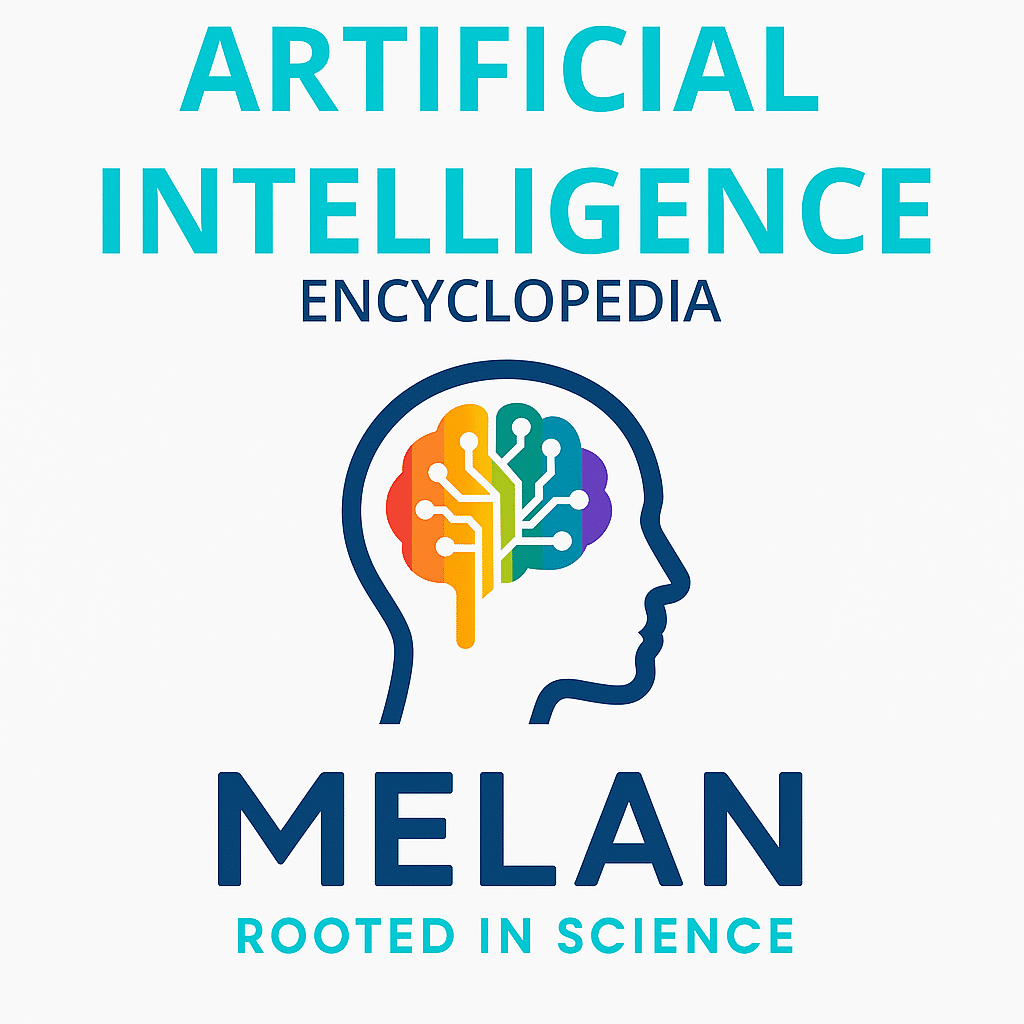Principal Component Analysis (PCA) refers to a dimensionality reduction technique that transforms high-dimensional data into a lower-dimensional representation while preserving the most important variation in the dataset. This statistical method identifies the principal components linear combinations of original variables that capture maximum variance enabling data visualization, noise reduction, and computational efficiency in machine learning applications by reducing the number of features while retaining the essential patterns and relationships within complex datasets.
Principal Component Analysis (PCA)
|
|
|---|---|
| Category | Statistics, Machine Learning |
| Subfield | Dimensionality Reduction, Data Analysis, Linear Algebra |
| Mathematical Basis | Eigenvalue Decomposition, Singular Value Decomposition |
| Key Output | Principal Components, Explained Variance, Loadings |
| Primary Applications | Data Visualization, Feature Reduction, Exploratory Analysis |
| Sources: Pearson Original Paper, Journal of Multivariate Analysis, IEEE Pattern Analysis | |
Other Names
PCA, Karhunen-Loève Transform, Hotelling Transform, Proper Orthogonal Decomposition, Empirical Orthogonal Functions, Singular Value Decomposition, Factor Analysis
History and Development
Principal Component Analysis was first introduced by Karl Pearson in 1901 as a method for fitting planes and lines to data points, though the computational techniques for practical implementation weren’t developed until Harold Hotelling’s work in the 1930s. Hotelling formalized the mathematical framework and demonstrated how PCA could be used for psychological and educational testing applications. The method gained broader recognition in the 1960s and 1970s as computing power increased, enabling application to larger datasets in fields like meteorology, where it was used to analyze weather patterns, and psychology, where it helped identify underlying factors in personality and intelligence testing.
Modern PCA became essential with the rise of high-dimensional data in the 1990s and 2000s, particularly in genomics, computer vision, and machine learning, where researchers needed efficient methods to handle datasets with thousands or millions of features while extracting meaningful patterns and reducing computational complexity.
How PCA Works
PCA operates by finding the directions of maximum variance in high-dimensional data and projecting the data onto a lower-dimensional subspace defined by these principal components. The algorithm begins by standardizing the data to ensure all variables contribute equally, then computes the covariance matrix that describes relationships between all pairs of variables. Through eigenvalue decomposition or singular value decomposition, PCA identifies eigenvectors that represent the principal components directions in the data space that capture the most variation.
The eigenvalues indicate how much variance each component explains, allowing researchers to select the most important components that retain a desired percentage of the total variance. The original data is then transformed by projecting it onto the selected principal components, creating a lower-dimensional representation that preserves the essential structure while reducing noise and computational requirements for subsequent analysis.
PCA Variations
Standard PCA
Classical linear dimensionality reduction that finds orthogonal components maximizing variance, suitable for datasets where linear relationships dominate and Gaussian distributions are approximately valid.
Kernel PCA
Nonlinear extension that uses kernel methods to capture complex, nonlinear relationships in data by implicitly mapping to higher-dimensional spaces before applying standard PCA techniques.
Sparse PCA
Variant that enforces sparsity constraints on principal components, making them easier to interpret by ensuring only a subset of original variables contribute significantly to each component.
Real-World Applications
PCA enables data visualization by reducing high-dimensional datasets to 2D or 3D representations that can be plotted and explored, helping researchers identify clusters, outliers, and patterns in complex data from fields like genomics, finance, and social science research. Image processing applications use PCA for compression and noise reduction, transforming high-resolution images into compact representations that retain essential visual information while reducing storage and transmission requirements. Machine learning systems employ PCA as a preprocessing step to reduce computational complexity and improve performance by eliminating redundant features and focusing on the most informative dimensions, particularly in optimization of high-dimensional machine learning models.
Financial analysis uses PCA to identify common factors driving asset price movements, enabling portfolio optimization and risk management by understanding how different investments correlate and respond to market conditions. Bioinformatics researchers apply PCA to genomic data for population genetics studies, disease research, and drug discovery, revealing patterns of genetic variation and identifying biomarkers for health conditions through dimensional analysis.
PCA Benefits
PCA dramatically reduces computational requirements by eliminating redundant features and focusing analysis on the most informative dimensions, enabling efficient processing of very large datasets that would be intractable in their original high-dimensional form. The technique provides interpretable results through explained variance ratios that quantify how much information each component captures, helping researchers understand the relative importance of different dimensions and make informed decisions about dimensionality reduction.
PCA removes noise and emphasizes signal by focusing on directions of maximum variance, often improving the performance of downstream machine learning algorithms and statistical analyses. The method is unsupervised and makes no assumptions about class labels or target variables, making it broadly applicable across diverse domains and data types. PCA also enables effective data visualization by projecting complex multidimensional relationships into two or three dimensions that humans can easily interpret and explore.
Risks and Limitations
Linear Assumptions and Nonlinear Relationships
Standard PCA assumes linear relationships between variables and may miss important nonlinear patterns in the data, potentially discarding crucial information that could be essential for understanding complex systems or making accurate predictions. This limitation can be particularly problematic in biological, social, and physical systems where nonlinear dynamics dominate.
Interpretability and Component Meaning
Principal components are mathematical constructs that may not correspond to meaningful real-world concepts, making it difficult to interpret results and understand what the components actually represent in practical terms. This can create challenges for domain experts who need to understand and trust the analysis results for decision-making purposes.
Sensitivity to Outliers and Data Scaling
PCA is highly sensitive to outliers that can disproportionately influence the principal components, potentially leading to misleading results that don’t represent the underlying data structure accurately. The method also depends critically on data preprocessing and scaling choices, with different normalization approaches potentially yielding substantially different component structures.
Information Loss and Variance Bias
While PCA preserves variance optimally, this may not align with preserving information most relevant for specific tasks, particularly in supervised learning where the components that explain most variance might not be most predictive of target variables. The focus on variance can bias results toward noisy dimensions with high variation rather than meaningful signal.
Validation and Application Standards
Determining the appropriate number of components to retain requires careful consideration of explained variance trade-offs and validation using domain knowledge, which can be subjective and vary across applications. Professional standards for PCA application in critical domains like healthcare and finance increasingly require robust validation methods and sensitivity analysis. These challenges stem from cases where inappropriate PCA application led to misinterpretation of complex data patterns, market demands for interpretable and reliable dimensionality reduction methods, and regulatory requirements for transparent analytical techniques in regulated industries.
Best Practices and Quality Assurance
Statistical organizations, data science communities, and professional associations work to establish guidelines for appropriate PCA application, validation, and interpretation across different domains. Academic institutions and research organizations focus on developing robust PCA variants and complementary techniques that address traditional limitations. The intended outcomes include improving the reliability and interpretability of PCA results, establishing validation frameworks for dimensionality reduction techniques, developing robust methods that handle outliers and nonlinear relationships, and ensuring PCA applications provide meaningful insights rather than statistical artifacts. Initial evidence shows increased awareness of PCA limitations among practitioners, development of nonlinear and robust PCA variants, growing emphasis on validation and sensitivity analysis, and establishment of domain-specific guidelines for dimensionality reduction in critical applications.
Current Debates
Linear vs. Nonlinear Dimensionality Reduction
Researchers debate whether to use traditional linear PCA or more complex nonlinear methods like kernel PCA, t-SNE, or autoencoders, weighing the interpretability and computational efficiency of linear methods against the flexibility of nonlinear approaches.
Number of Components Selection Criteria
Practitioners disagree about optimal methods for choosing how many principal components to retain, comparing approaches like explained variance thresholds, scree plots, cross-validation, and domain-specific considerations.
Standardization vs. Raw Data Analysis
Data scientists argue about whether to standardize variables before PCA or use raw data, considering how different scaling approaches affect component interpretation and the relative importance of variables with different units.
PCA vs. Alternative Dimensionality Reduction Methods
Researchers compare PCA against newer techniques like UMAP, factor analysis, and independent component analysis, debating the trade-offs between computational efficiency, interpretability, and preservation of different types of data structure.
Supervised vs. Unsupervised Dimensionality Reduction
Machine learning practitioners debate whether to use unsupervised PCA or supervised dimensionality reduction techniques that consider target variables, weighing the general applicability of PCA against the potentially better performance of supervised methods.
Media Depictions of PCA
Movies
- A Beautiful Mind (2001): John Nash’s (Russell Crowe) mathematical insights into pattern recognition and dimensional relationships parallel the conceptual foundations of PCA in identifying underlying structures
- Hidden Figures (2016): The complex mathematical calculations and data analysis work demonstrates the type of dimensional problem-solving that PCA addresses in modern computational contexts
- The Imitation Game (2014): Alan Turing’s (Benedict Cumberbatch) pattern recognition work in codebreaking involves dimensional analysis concepts similar to those underlying PCA
- Moneyball (2011): Billy Beane’s (Brad Pitt) statistical analysis of player performance involves reducing complex multi-dimensional player statistics to essential factors, paralleling PCA applications
TV Shows
- Numb3rs (2005-2010): Charlie Eppes (David Krumholtz) frequently uses statistical techniques including dimensional analysis and pattern recognition that reflect PCA principles
- CSI franchise (2000-2015): Crime scene analysis often involves processing multiple variables and identifying key patterns, similar to PCA applications in forensic data analysis
- The Big Bang Theory (2007-2019): The characters’ scientific work often involves complex data analysis and dimensional reduction concepts that relate to PCA applications
- Silicon Valley (2014-2019): Data compression and algorithm optimization challenges depicted in the show relate to dimensionality reduction concepts underlying PCA
Books
- The Signal and the Noise (2012) by Nate Silver: Discusses extracting meaningful patterns from complex data, which relates to PCA’s goal of identifying principal sources of variation
- Weapons of Math Destruction (2016) by Cathy O’Neil: Examines how dimensional reduction and data simplification can both reveal insights and hide important nuances
- The Information (2011) by James Gleick: Explores concepts of information compression and pattern recognition that underlie dimensional reduction techniques like PCA
- Thinking, Fast and Slow (2011) by Daniel Kahneman: Discusses how humans naturally reduce complex information to simpler representations, paralleling PCA’s dimensionality reduction
Games and Interactive Media
- Data Visualization Software: Tools like Tableau, R, and Python libraries that implement PCA for exploratory data analysis and interactive visualization of high-dimensional datasets
- Scientific Computing Platforms: MATLAB, Mathematica, and similar tools that provide interactive PCA implementations for research and educational purposes
- Educational Simulations: Interactive tools and web applications that demonstrate PCA concepts through visual manipulation of data points and principal components
- Pattern Recognition Games: Puzzle games that involve identifying underlying patterns in complex data, similar to the pattern detection goals of PCA
Research Landscape
Current research focuses on developing robust PCA variants that handle outliers, missing data, and non-Gaussian distributions more effectively than traditional methods, expanding the applicability of principal component analysis to real-world datasets with common data quality issues. Scientists are working on sparse and interpretable PCA methods that provide clearer connections between mathematical components and domain-specific meanings, improving the practical utility of dimensionality reduction results.
Advanced techniques combine PCA with deep learning and other machine learning methods to create hybrid approaches that leverage both linear and nonlinear dimensionality reduction capabilities. Emerging research areas include quantum PCA algorithms that exploit quantum computing properties for exponential speedup, streaming PCA for real-time analysis of continuously arriving data, and privacy-preserving PCA techniques that enable collaborative analysis while protecting sensitive information.
Selected Publications
- Predicting expression-altering promoter mutations with deep learning
- Exploring structural diversity across the protein universe with The Encyclopedia of Domains
- CXCR4 signaling determines the fate of hematopoietic multipotent progenitors by stimulating mTOR activity and mitochondrial metabolism
- Genomic investigation of 18,421 lines reveals the genetic architecture of rice
- Phenotypic screening with deep learning identifies HDAC6 inhibitors as cardioprotective in a BAG3 mouse model of dilated cardiomyopathy
Frequently Asked Questions
What exactly is Principal Component Analysis?
PCA is a statistical technique that reduces the number of variables in a dataset while keeping the most important information, by finding new dimensions that capture the maximum variation in the data.
When should I use PCA in my data analysis?
Use PCA when you have high-dimensional data with many correlated variables, need to visualize complex datasets, want to reduce computational complexity, or need to remove noise while preserving essential patterns.
How do I decide how many principal components to keep?
Common approaches include retaining components that explain a certain percentage of variance (like 80-95%), using scree plots to identify the “elbow” point, or choosing based on domain knowledge and downstream task requirements.
What’s the difference between PCA and factor analysis?
PCA focuses on explaining maximum variance in observed variables, while factor analysis aims to identify underlying latent factors that cause the observed correlations, making factor analysis more appropriate for understanding causal relationships.
What are the main limitations of PCA?
Key limitations include the assumption of linear relationships, sensitivity to outliers and data scaling, potential loss of interpretability in the principal components, and focus on variance rather than predictive relevance for specific tasks.


